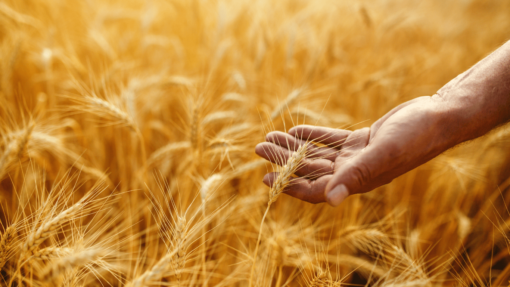Global commodity markets have been affected by the Russian invasion of Ukraine on February 24, 2022. Energy prices have skyrocketed. The American Automobile Association estimated the national average gas price in the United States at $4.32/gallon on March 10. Implications of the conflict are far reaching, affecting nearly all aspects of the global economy. Agricultural producers have been affected on two fronts, input prices (fuel, fertilizer, etc.) and commodity prices (wheat, corn, and soybeans). The focus of this article is the impact on grain and oilseed markets and marketing tools that producers may want to consider to help mitigate price risk.
Ukraine is an important producer and exporter of wheat, corn, barley, and sunflower seed products. Table 1 shows Ukraine’s share of world production and their share of world exports for these commodities. While Ukrainian corn represents only 3.5% of world production, it accounts for 13.8% of world exports. Meanwhile, Ukraine produces almost a third of the world’s sunflower seed, which is then turned into about half of the world’s meal and oil exports. Sunflower seed oil production and exports in Ukraine have some ramifications for soybean oil and soybean prices as imperfect substitutes.
Table 1. Ukraine’s Share of World Production and Exports for Select Commodities, 2021/22
| Wheat | Barley | Corn | Sunflower Seed | Sunflower Seed Meal | Sunflower Seed Oil | |
| Production | 4.2% | 6.8% | 3.5% | 30.6% | 27.5% | 30.6% |
| Exports | 9.8% | 16.7% | 13.8% | 4.8% | 58.0% | 47.3% |
Source: USDA PSD https://apps.fas.usda.gov/psdonline/app/index.html#/app/home
Volatility in corn, wheat, and soybean futures markets have been extreme (Figures 1-3). For example, daily price changes for July wheat for the past ten trading days have been: -75, 67, 50, 74.25, 75, 59, 77.25, -57.25, -85, and -67.5 cents. Extreme volatility can make marketing decisions challenging and potentially expensive. However, volatility also often provides opportunities for profit. Three months ago, every farmer would have jumped at the ability to sell wheat futures at $9.00; now farmers can set a futures price floor at $9.62. Purchasing put options is expensive – $1.48 for an at-the-money put as of March 9. However, with a gap between the fall crop insurance price of $7.14 and current market offerings of $11.10, taking some additional downside risk off the table while leaving the top side open is a prudent move.
Corn and soybean projected crop insurance prices were set 10 days ago at $5.90 and $14.33, respectively. Harvest futures prices on March 10 were $6.50 for corn and $14.95 for soybeans, an increase of 60 and 62 cents, respectively. Producers should be asking themselves at what point they should take some additional price risk off the table. Being too aggressive with setting prices (i.e. cash forward contracts and short hedges) should be approached cautiously as producers need to avoid exchanging price risk for production risk or selling their way out of a bull market. However, managing the downside price risk should be on every producer’s mind, particularly with input prices at elevated levels.
Grain and oilseed markets are likely to remain unpredictable, due to uncertainty generated from the Russia-Ukraine conflict. Producers should consider how much of the 2022 crop they are comfortable pricing at this point in the year and how they can protect the downside of this market while keeping the upside open. Options strategies will be expensive but should be fully explored based on current market conditions.
Figure 1. Daily July Wheat Futures, January 3 to March 10, 2022



References and Resources:
USDA – Foreign Agricultural Services. Production, supply, and distribution (PSD). Accessed at: https://apps.fas.usda.gov/psdonline/app/index.html#/app/home
Barchart.com. Corn soybean and wheat historical futures prices. Accessed at: https://www.barchart.com/futures/grains?viewName=main
AAA – https://gasprices.aaa.com/
Smith, Aaron. “Ukraine-Russia Implications in Grain and Oilseed Markets“. Southern Ag Today 2(12.1). March 14, 2022. Permalink

